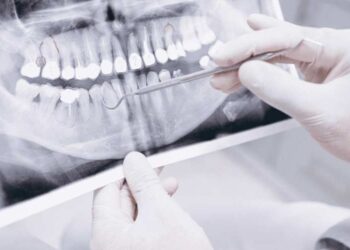The evolution with which technology is advancing sometimes really shocks us, and many things that seem new to us today are actually products or services that became available a decade or so ago. With some echoes of technology, as users, we no longer have a notion of chronology because too much is happening and it’s simply difficult to keep up with all the changes that are alternating the user experience.
All the announcements say that the arrival of Web 3.0 will very clearly show what kind of innovations we’re dealing with in relation to Web 2.0 so the use of the Internet will no longer be the same as before. Many people are confused by the name used and it’s not easy to determine, but it’s actually the third version of the Internet or a new concept on which the Internet will be built and get its extension compared to the Internet we use today.
Everyone should strongly feel this change, including developers and ordinary users altogether. In the last few years, the progress in the use of networks has been so great that the production of attractive websites and applications has been easier than ever. So what awaits us with Web 3.0?
How Did the First Two Versions of the Internet Develop?
Perhaps this idea can be visualized if we look at a brief summary of what we know about Web 1.0 and 2.0 and how they evolved.
Initially, a Web 1.0 beta version was created with the concept of hypertext even before the advent of the World Wide Web, i.e. an Internet service that allows us to view a large number of documents and information (text, images, sound, video, etc.) via networked computers. Needless to say, the initial hypertext systems were all dependent on local files until Tim Berners-Lee, a British computer scientist and university professor, developed a new system that could work over networks and gave individuals the ability to link a file on one device to a file on another device. In mid-November 1989, he implemented the first successful communication between an HTTP client and a server over the Internet.
In December 1990, Berners-Lee, with the help of Belgian computer scientist Robert Cailliau, developed an application using Objective-C, an object-oriented programming language for his next computer system and named it the World Wide Web. It was more than a file browsing application. It was a file-viewing and editing tool that would later be used globally, and its original purpose was to facilitate the use of large amounts of data at the CERN Research Institute near Geneva. Web 1.0 as a concept was the first step at the beginning of the World Wide Web revolution and it is often labelled “read-only web”.
It can be said that the period in which Web 1.0 dominated lasted from 1991 to 2004. Websites were informative at the time and had content that was static. Hyperlinks were simple and often related to individual words. There was no use of CSS, dynamic links, interactivity such as user login, no comments on posts, etc. Websites were built using tools such as Server Side Includes or the Common Gateway Interface and didn’t use Perl, PHP, Python, or Ruby at the time. The focus of this phase was to build a network that was supposed to be made available and to commercialize it.
The main areas of interest were protocols such as HTTP, markup languages such as HTML or XML, Internet access through Internet service providers, development of the first web browsers, development of web platforms and tools, development of programming languages such as Java and Javascript, and web page creation. The Web 1.0 era can be described as a period where Internet users were consumers of content created by content creators.
We Live In the Web 2.0 Era
The Web 2.0 concept began in 2004 and we live it to this day. This is the second stage in the development of the World Wide Web, which is marked “read-write web”. The emphasis in Web 2.0 is on content created for users who are also involved in the process of building it, on ease of use, interoperability, and culture of participating in the web community.
Some of the earliest platforms to show these features of Web 2.0 were YouTube, Facebook, and Amazon. Due to the development of CMS technology like WordPress, a number of new opportunities have emerged on the Internet such as blogs or web stores. Web 2.0 has brought a big change as people have been able to share their perspectives, opinions, views, and experiences through many online tools and platforms.
Under the Web 2.0 concept, the Internet has become more social and users have been encouraged to connect with each other through social networks and various platforms or blogs, and the result has been the creation of vast amounts of data and content. Often, as part of the Web 2.0 revolution, the development of mobile Internet and mobile devices as new platforms on which the popularity of the Internet has grown through numerous applications has been forgotten.
We’re living Web 2.0 today and we’re coping at that stage, but why is the transition to Web 3.0 required? The answer to this question may be the fact that Web 2.0 for some has shortcomings that became more pronounced over time and should be changed by the advent of Web 3.0. In Web 2.0, the client (user) will make an HTTP request to the server and if the whole process is OK, the server will send the web page in response to the request.
In this process, the fact that all data is stored on a centralized server controlled by companies can be considered a drawback. Facebook, Google, and Twitter, for example, have begun storing user data on their servers to provide better service to users through machine learning. This has enabled us as users to spend more time on their platforms, and the extra benefit that these companies have gained from this process is higher earnings from advertising. In other words, large technology companies have made big profits by selling information about customers.
Web 3.0 as a Secure Environment
Here we come to one of the key moments of Web 3.0 – creating a decentralized, but secure, Internet environment where people are free to share money (pay online with and make various transactions that include the money transfer such as depositing and withdrawing funds on casinos at TopCasinoExpert.com), information, and services without intermediaries or technology companies. This premise points to the fact that Web 3.0 applications should work on the basis of blockchain technology and the so-called peer-to-peer nodes that are based on the concept of networking without the need for authorization on a central server.
Users in Web 3.0 have control over their data and navigate various platforms from social networks to email or web stores using a single personalized user account while creating public activity on the blockchain. Unlike Web 2.0, where data is stored in a single database or cloud through the same service provider and where the user is the product, predictions say that on Web 3.0, users will own content and information.
Web 3.0 is also a much broader concept than the aforementioned personal data control and freer user experience. Web 3.0 could bring ubiquitous connectivity, new web service interoperability, business software models as a service, distributed computing, open data, and open source technologies, the concept of open identity and intelligent web in terms of using advanced semantic web technologies, distributed databases data and intelligent applications based on language processing, machine learning, and artificial intelligence.
Similar predictions have been discussed with many experts within the IT sector and some of the major, for some insurmountable, problems are the scalability of Web 3.0 and the possibility of maintaining it in general with so many users, Bandwidth (the amount of data transmitted over the network at a specific time) and data storage.
The big question is how Web 3.0 can solve these problems and what the decentralized and unregulated platforms of the new age should look like in this case. Time will tell what a new stage in the development of the Internet is and whether its concept can even exist without a centralized structure or not.









